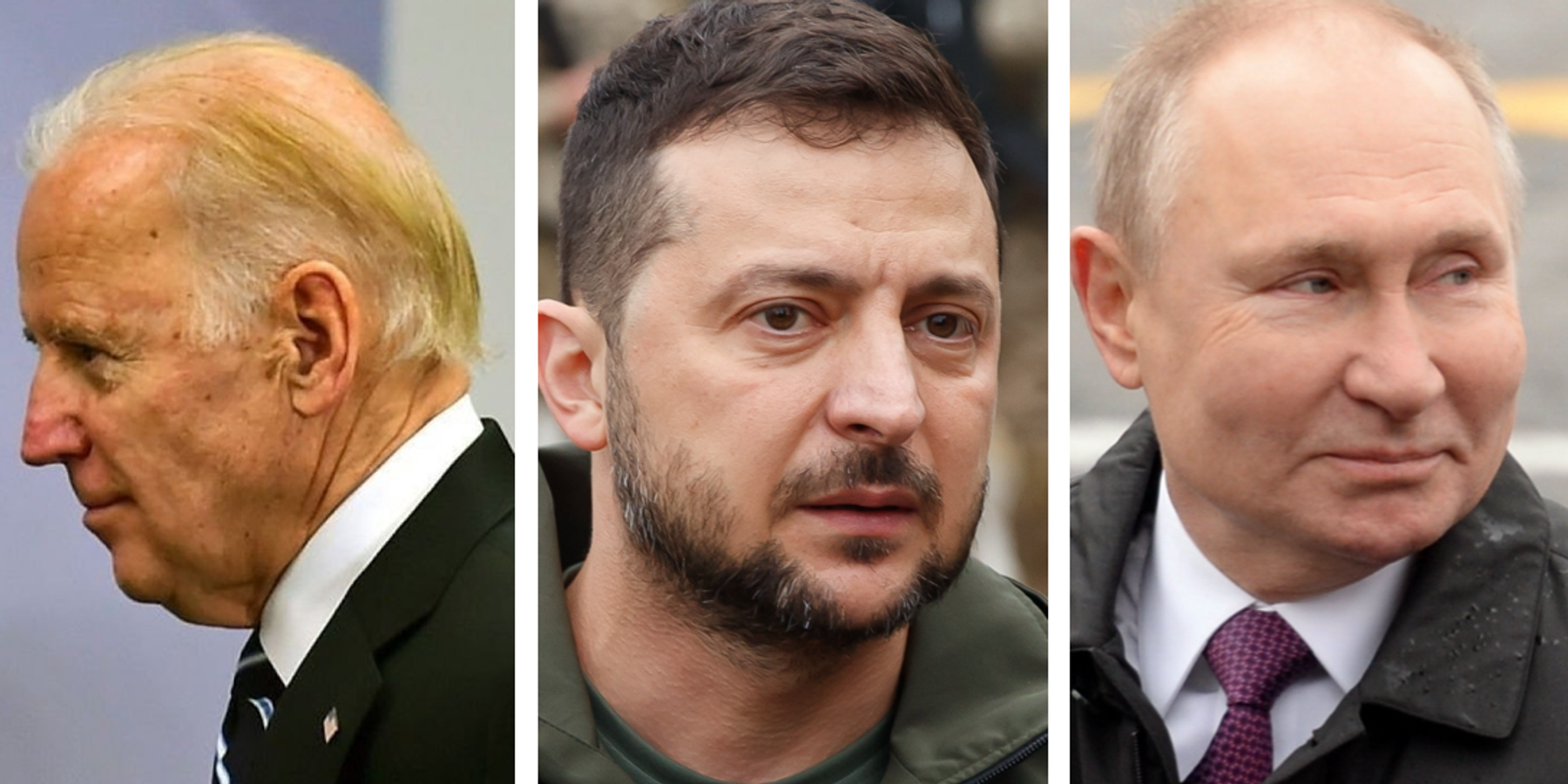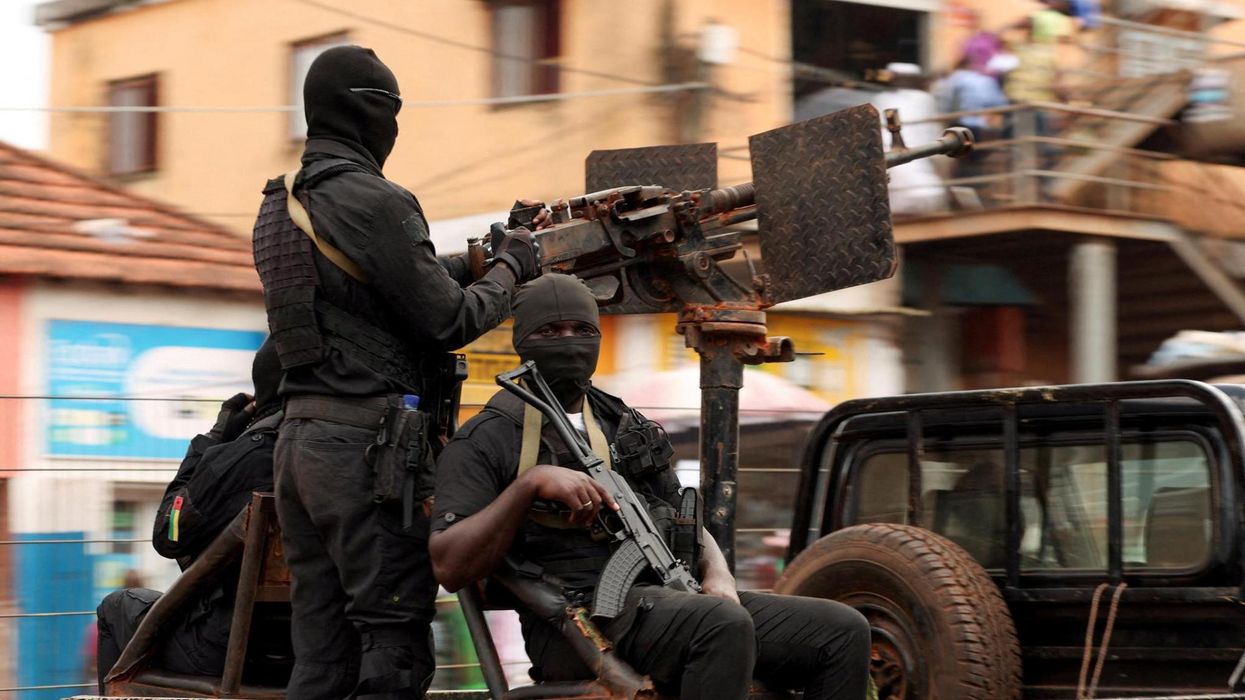Russian progress in the Ukraine war is pushing the United States toward a painful choice.
If we want a prosperous Ukraine with a viable path toward liberal governance and European Union membership, we will have to concede that it cannot be a NATO or U.S. ally, and that this neutral Ukraine must have verifiable limits on the types and quantities of weapons it may hold. If we refuse to agree to those terms, Russia will quite probably turn Ukraine into a dysfunctional wreck incapable of rebuilding itself, allying with the West, or constituting a military threat to Russia.
Russian progress is not yet evident on the map, where the battle lines have not moved appreciably over the past year. Ukraine’s counteroffensive failed to break through Russian defenses, and Russia has not pushed Ukrainian forces significantly westward. An observer comparing territorial holdings in January 2023 with January 2024 might reasonably conclude that the war has become a stalemate.
But this picture is misleading. The Kremlin is almost certainly not seeking such a breakthrough, at least not yet. Rather, it is methodically grinding down Ukraine’s capacity not only to wage war, but also to reconstitute a post-war military, by killing and wounding enormous numbers of Ukrainian soldiers and exhausting Ukrainian and Western arsenals of arms and ammunition. Ukraine is running short of artillery shells, and the U.S. and Europe cannot manufacture new ones quickly enough to meet Ukraine’s needs. Russian barrages of long-range air and missile strikes are increasingly overwhelming the capacity of Ukrainian air defenses, and the West simply lacks the ability to continue providing Patriot missiles or other advanced air defense systems.
It is quite true, as the Biden administration has warned, that ending U.S. aid to Kyiv would quickly result in Ukraine’s collapse. Sufficient aid to help Ukraine to stand successfully on the defensive should therefore continue. But what U.S. policymakers need to understand and honestly acknowledge is that absent a compromise peace settlement, massive levels of aid will have to continue not just for the coming year, but indefinitely. There is very little realistic chance of the West being able to outlast Russia and force it to accept peace on Ukrainian terms. The controversies in Congress over aid to Ukraine reflect these realities and are unlikely to diminish.
Under such circumstances, for the Biden administration to pledge American support to Ukraine for “as long as it takes” to defeat Russia is unwise, and even dishonest. It is widely believed in Washington that the failure of Ukraine’s counteroffensive means that the West has no choice but to back Ukraine’s fight against Russia for many years to come. Seeking compromise with Moscow is regarded as not only undesirable but also futile. Lacking alternatives, we must stay the present course, hoping that time will improve Ukraine’s position.
But time is not on Ukraine’s side, either militarily or economically, and so Ukraine’s position in any future negotiations may well be very much worse than at present. Russia’s population is at least four times that of Ukraine and its GDP 14 times. The Russian army is far better led and more tactically adept than it was at the start of the war, and Western sanctions show no signs of being able to cripple the Russian economy, which is more and more geared for war.
And whatever Brussels may say, as long as the war continues it is exceptionally unlikely that Ukraine will be able to develop economically and begin the extremely difficult process of joining the European Union.
Most importantly, the United States has not tested the assumption that Russian President Vladimir Putin has no interest in talking. It is indeed very likely that Putin believes Russia now has the upper hand in the war and can afford to wait. Nonetheless, Putin has repeatedly insisted that Russia is ready to talk, and also that Washington – not Kyiv – makes the key decisions in the war and therefore it is for Washington to engage in talks.
This may be posturing; but it is also possible that Putin recognizes that absent a settlement, Russia is headed toward the dangers of a permanently volatile confrontation with the West, an economy distorted by the demands of military production, and a constricting degree of dependence on China. Russians’ concerns about these problems are likely to grow as their fears they may lose the war in Ukraine diminish.
It is further alleged that Putin believes that a future Donald Trump presidency would be the Kremlin’s best hope for a settlement on Russian terms. However, Trump’s first term produced some friendly rhetoric but much hostile action toward Moscow, including withdrawal from nuclear arms agreements and increased flows of U.S. weapons and training for the Ukrainian army.
Moreover, given the animosity toward Trump evident in Congress and the U.S. foreign and security policy establishment, Putin has little reason for confidence that Trump could actually deliver any deal. By 2020, Russians were thoroughly disillusioned with Trump. As the leading Russian foreign policy thinker Fyodor Lukyanov told Radio Liberty about the 2020 elections, “Why should Russians care? I don’t believe anyone here expects any change regardless of who will win.”
Given that Russia now has the advantage on the battlefield and senses that time is on its side, to get Putin to end the war and end his ambition to subjugate Ukraine or seize more territory, Washington will have to offer some serious incentives. These will need to include showing that the U.S. is prepared to meet Russian concerns about the U.S. and NATO security threat to Russia (concerns that are genuinely held throughout the Russian establishment).
This will mean agreement to a Ukrainian treaty of neutrality, with security guarantees for Ukraine, that will allow that country to follow neutral Finland and Austria during the Cold War and develop as a free market democracy. Western sanctions against Russia would need at least to be eased if not suspended, but with a binding commitment that they would automatically resume if Russia launched new aggression.
On the issue of the territories presently occupied by Russia, the only possible way forward is to defer this question for future talks under United Nations auspices, while putting the maximum possible security measures in place to prevent a resumption of war.
An agreement along these lines would be extremely painful for both Ukraine and the Biden administration. However, we should see preserving the independence of 80 percent of Ukraine as a real victory, even if not a complete one. It is certainly far better than what appears to be the alternative: a war of attrition with dreadful losses for Ukraine, leading sooner or later to a far greater Ukrainian defeat.
Sophia Ampgkarian contributed to the research for this article.
- Did the West deliberately prolong the Ukraine war? ›
- Biden's role in Ukraine peace is clear now ›
- Does Putin want to end the war? We should test him | Responsible Statecraft ›
- A chat with the devil beats a lifetime in hell | Responsible Statecraft ›
- Diplomacy Watch: US and Ukraine to strike new security pact | Responsible Statecraft ›
- Droning Russia’s nuke radars is the dumbest thing Ukraine can do | Responsible Statecraft ›
- Diplomacy Watch: What’s the point of Swiss peace summit? | Responsible Statecraft ›
- Diplomacy Watch: At G7 summit, West works to reassure Ukraine | Responsible Statecraft ›
- Russia makes substantial gains in Ukraine’s east | Responsible Statecraft ›
- Putin and Zelenskyy claim that the other is not ready to negotiate | Responsible Statecraft ›
















